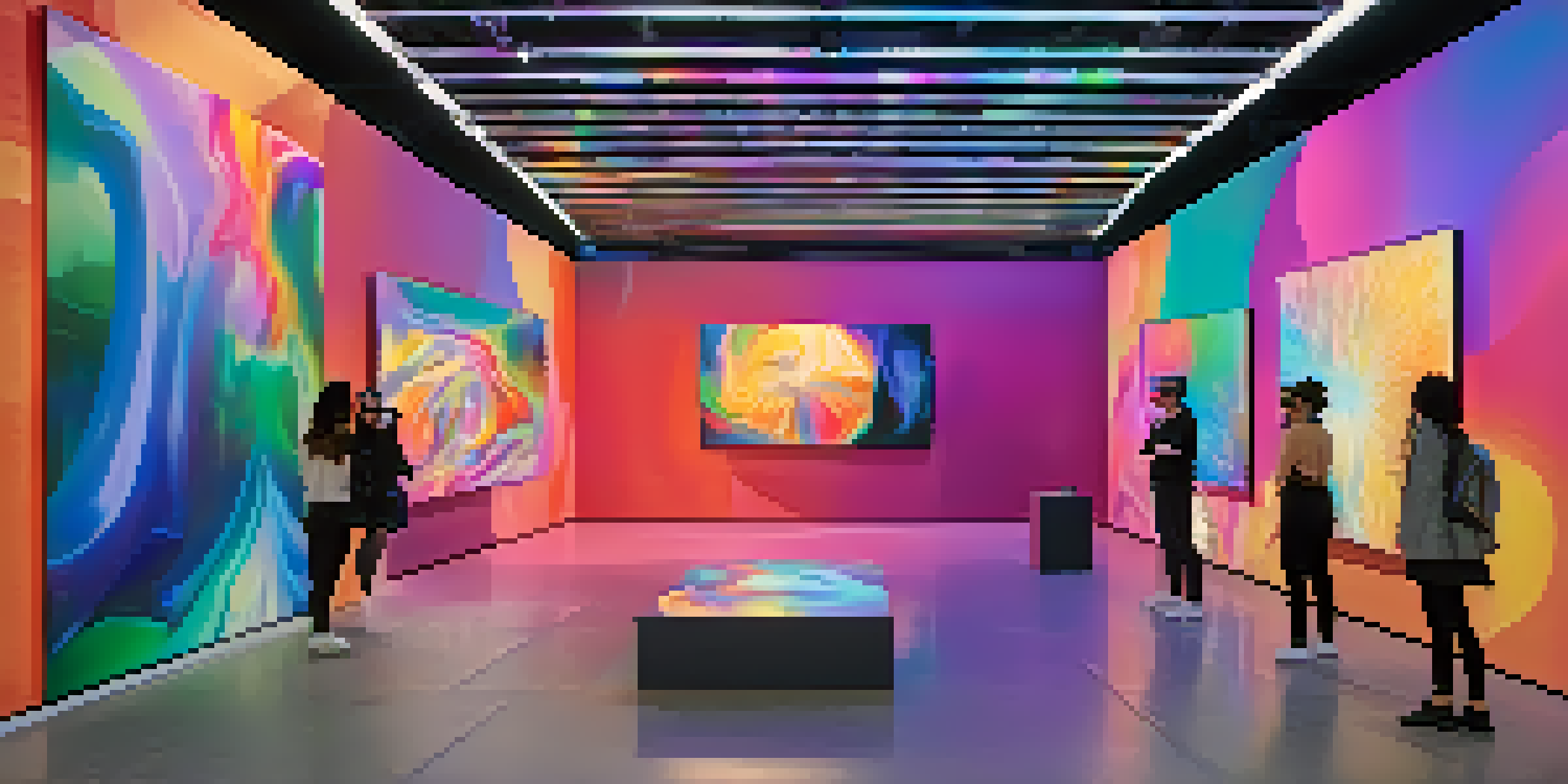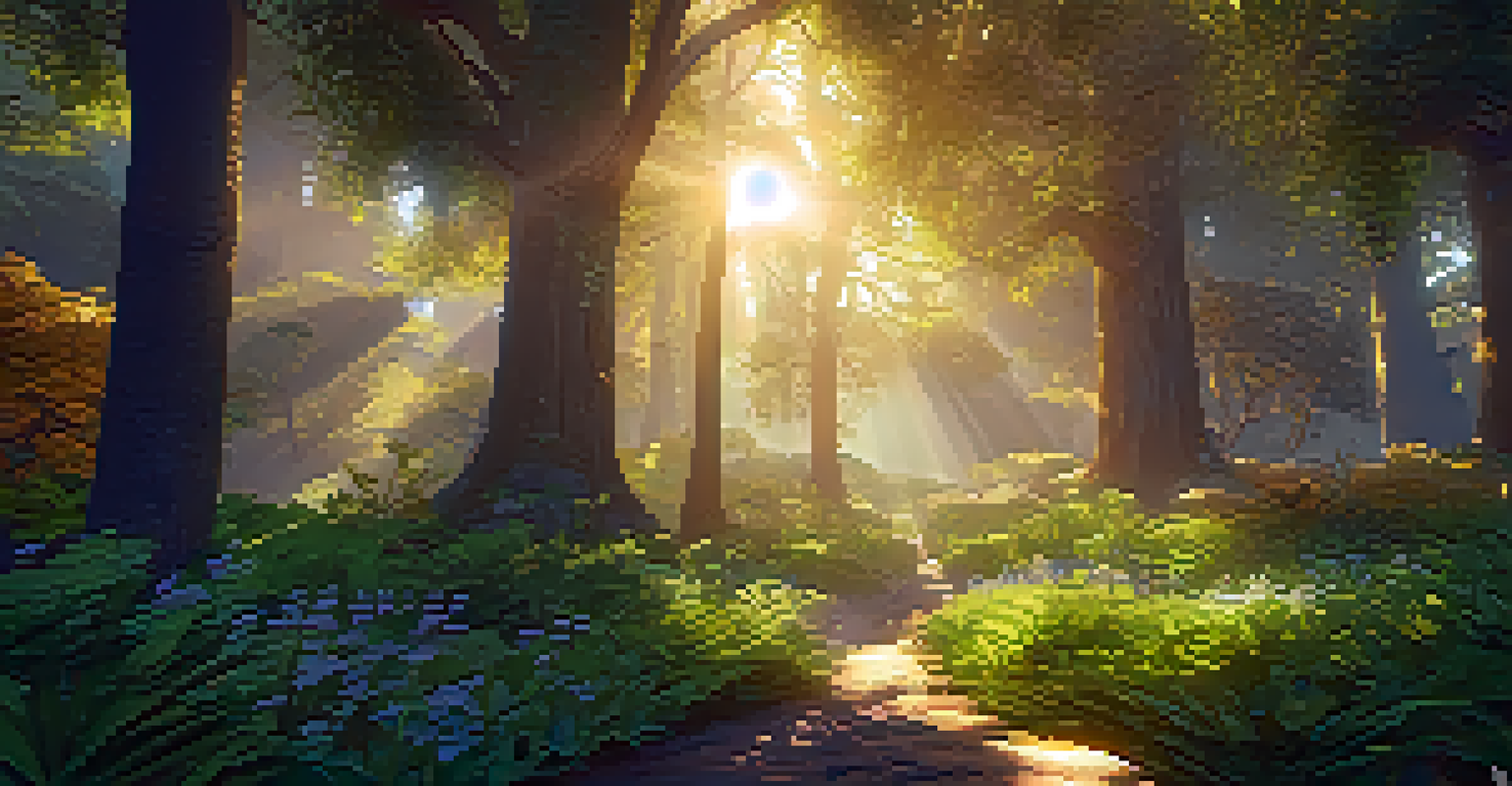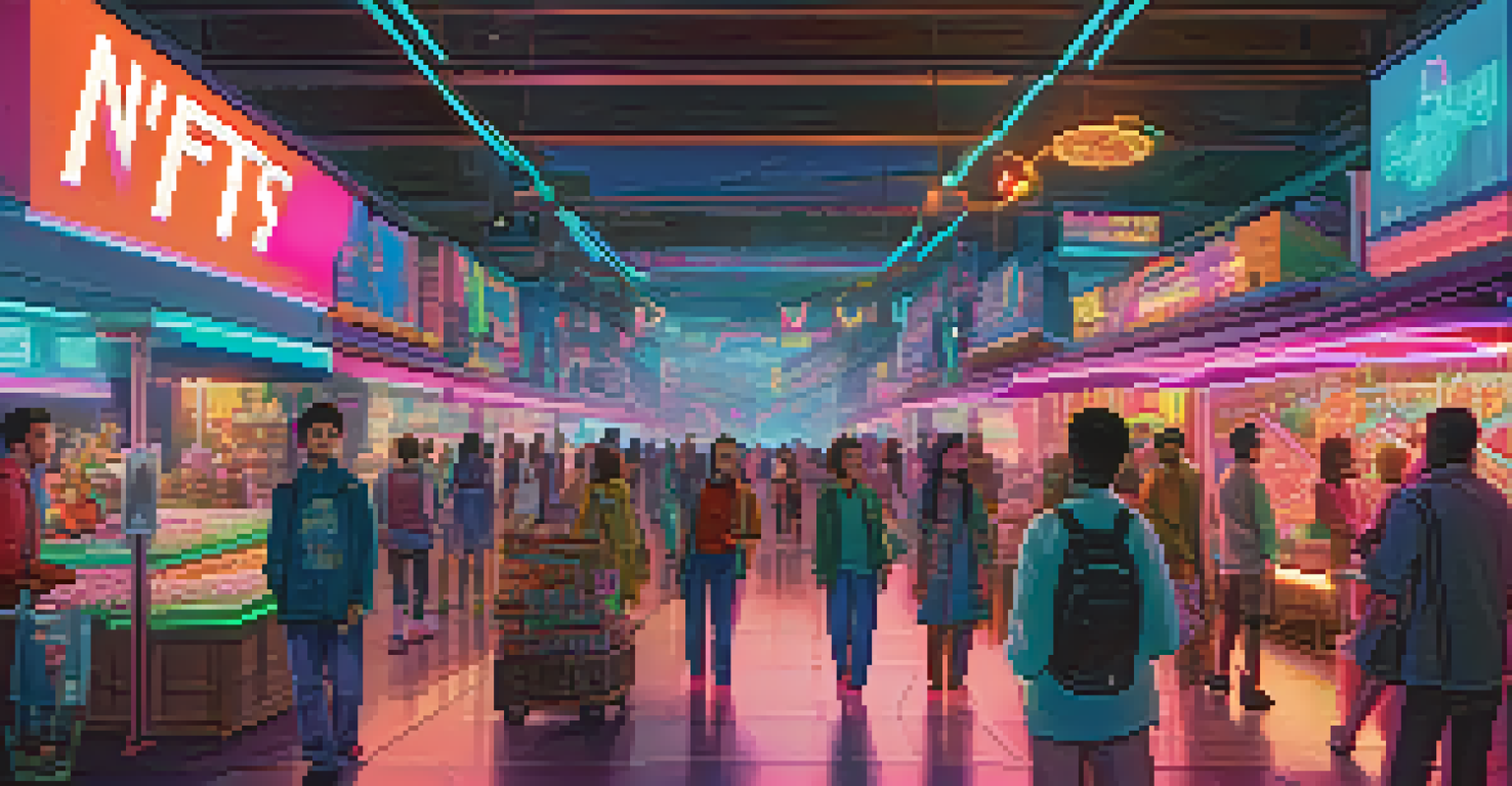Creating Immersive VR Experiences with NFT Integration

Understanding the Intersection of VR and NFTs
Virtual reality (VR) and non-fungible tokens (NFTs) are two of the most exciting technologies today. VR immerses users in digital environments, while NFTs provide unique digital ownership. Together, they create a powerful combination that can enhance user engagement and creativity. Imagine exploring a virtual gallery where each artwork is an NFT, making the experience not just visual, but also collectible.
Virtual reality is the ultimate canvas for creativity, allowing artists to create immersive experiences that transcend the limitations of traditional mediums.
This intersection opens doors to new business models and artistic expressions. Artists can sell their work directly to consumers in virtual spaces, removing the need for traditional galleries. This shift not only democratizes art but also allows creators to engage with their audience in novel ways. Think of it as transforming a simple art exhibition into an interactive adventure where each piece has its own story and value.
As these technologies continue to evolve, understanding their synergy becomes crucial for creators and businesses alike. The potential for immersive storytelling and unique ownership experiences is vast. By merging VR and NFTs, we can envision a future where our digital lives are richer, more engaging, and closely tied to our identities.
Crafting Engaging VR Environments for NFTs
Creating a captivating VR environment is the first step toward successful NFT integration. This involves designing spaces that not only showcase NFTs but also enhance the overall user experience. For instance, a virtual art gallery should reflect the essence of the artworks displayed, using lighting and sound to create an immersive atmosphere. Imagine walking through a digital space that feels alive, where each artwork draws you in deeper.

Consider using interactive elements that allow users to engage with NFTs beyond mere observation. Features like virtual tours, storytelling elements, or even augmented reality can elevate the experience. Users might explore the history behind each piece or interact with the creator through live Q&A sessions. By making the experience interactive, you’re not just displaying NFTs; you’re creating a community around them.
VR and NFTs Enhance User Engagement
The combination of virtual reality and non-fungible tokens creates immersive experiences that deepen user interaction and ownership.
Moreover, ensuring accessibility within these virtual environments is key. Not every user has the same level of comfort with technology, so creating intuitive navigation and user-friendly interfaces is essential. By focusing on inclusivity, you encourage a broader audience to appreciate and engage with the NFTs, enriching the overall VR experience.
Designing NFTs for Virtual Reality Experiences
When it comes to designing NFTs for VR, creativity knows no bounds. Artists can create 3D assets that not only represent their work but also function within the VR context. For example, a digital sculpture can be experienced from all angles, allowing users to appreciate its intricacies in a way that traditional media cannot offer. This 360-degree experience can transform how users interact with art.
NFTs empower creators, giving them the tools to monetize their digital art in ways that were previously unimaginable.
Furthermore, consider the narrative aspect of NFTs in VR. Each NFT can be embedded with stories, making them more than just static images or objects. Imagine an NFT that unlocks a new part of a virtual world or reveals a hidden storyline. This storytelling layer adds depth, encouraging users to explore and invest in the experience. It’s like turning a book into an interactive adventure.
Ultimately, the goal is to create NFTs that are not only visually appealing but also enhance the VR experience. This means thinking beyond the art itself and considering how it fits into the larger narrative of the virtual space. By doing so, creators can cultivate a deeper connection between users and the digital assets they engage with.
Monetization Strategies for VR and NFT Integration
Monetizing VR experiences through NFTs offers exciting opportunities for creators. One straightforward method is to sell NFTs directly to users, providing them unique ownership of digital assets. This could range from exclusive art pieces to virtual real estate in a digital world. By offering these unique advantages, creators can tap into a market that values scarcity and individuality.
Another approach is to implement a subscription model where users gain access to a library of NFTs within a VR environment. This could include rotating exhibitions or new digital assets added regularly. By fostering a sense of community and exclusivity, users are more likely to engage consistently and feel a part of something special. It’s like having a VIP pass to an ever-evolving art show.
Creating Community Around Digital Art
Building a strong community through social features and user-generated content fosters long-term engagement with VR and NFTs.
Additionally, think about collaborations with brands or other creators. Sponsored NFTs or branded virtual spaces can create additional revenue streams while enhancing user experiences. Brands can showcase their products in unique ways, blending marketing with immersive storytelling. This symbiotic relationship can lead to innovative projects that benefit all parties involved.
The Role of Community in VR NFT Experiences
Building a community around VR and NFTs is vital for long-term engagement. When users feel like they are part of a community, they are more likely to return and participate in shared experiences. Platforms can facilitate this by offering social features, such as chat rooms or collaborative projects, where users can discuss and explore NFTs together. It’s like joining a book club, but for art and digital assets.
Encouraging user-generated content can also strengthen community ties. Allowing users to create their own NFTs or modify existing ones fosters creativity and ownership. Imagine a virtual world where users share their unique creations, inspiring others and celebrating artistic expression. This collaborative environment can lead to a vibrant ecosystem that thrives on shared passions.
Moreover, hosting events like virtual exhibitions or live discussions can enhance community interaction. These events can showcase new NFT drops or feature guest artists, creating buzz and excitement. By making users feel like they are part of a larger narrative, you not only drive engagement but also cultivate a loyal following that values the experience.
Technical Considerations for VR NFT Integration
Integrating NFTs into VR involves several technical considerations that must be addressed for a seamless experience. First, ensure that the platform you choose can handle the storage and display of NFTs without compromising performance. A laggy or glitchy experience can turn users away, so optimizing for speed and efficiency is crucial. Think of it as making sure the stage is set perfectly before the show begins.
Additionally, consider the blockchain technology behind NFTs. Selecting a user-friendly blockchain can simplify transactions and ownership verification for users. Popular options like Ethereum or Solana have different benefits and drawbacks, so understanding these can help in creating a smoother user experience. The aim is to make the technology invisible to users, allowing them to focus on the immersive content.
Future Trends in VR and NFT Tech
Advancements in technology and the rise of the metaverse will shape the future of VR and NFT integration, making experiences more immersive and accessible.
Lastly, prioritize security in your VR NFT environment. As digital assets, NFTs can be susceptible to fraud and theft. Implementing robust security measures, such as encryption and secure wallets, can protect both creators and users. By ensuring a safe environment, you build trust, encouraging more people to engage with your VR experiences.
Future Trends in VR and NFT Integration
As technology continues to evolve, the future of VR and NFT integration looks promising. We can expect to see advancements in hardware that make VR experiences even more immersive and accessible. Imagine wearing lightweight, high-resolution headsets that transport you to fantastical worlds with ease. These improvements will likely attract more users, broadening the audience for VR and NFTs.
Moreover, the rise of the metaverse presents new opportunities for VR and NFT integration. This interconnected digital universe allows users to interact across various platforms and experiences. In this context, NFTs can act as a bridge, providing unique assets that users can carry into different virtual spaces. It’s like having a digital passport that grants access to exclusive locations and experiences.

Finally, sustainability will become increasingly important in the conversation around NFTs. As the environmental impact of blockchain technologies is scrutinized, more eco-friendly solutions are likely to emerge. This shift could lead to greener practices in creating and trading NFTs, appealing to a more conscious consumer base. By embracing these trends, creators can ensure that their VR experiences remain relevant and responsible in the future.